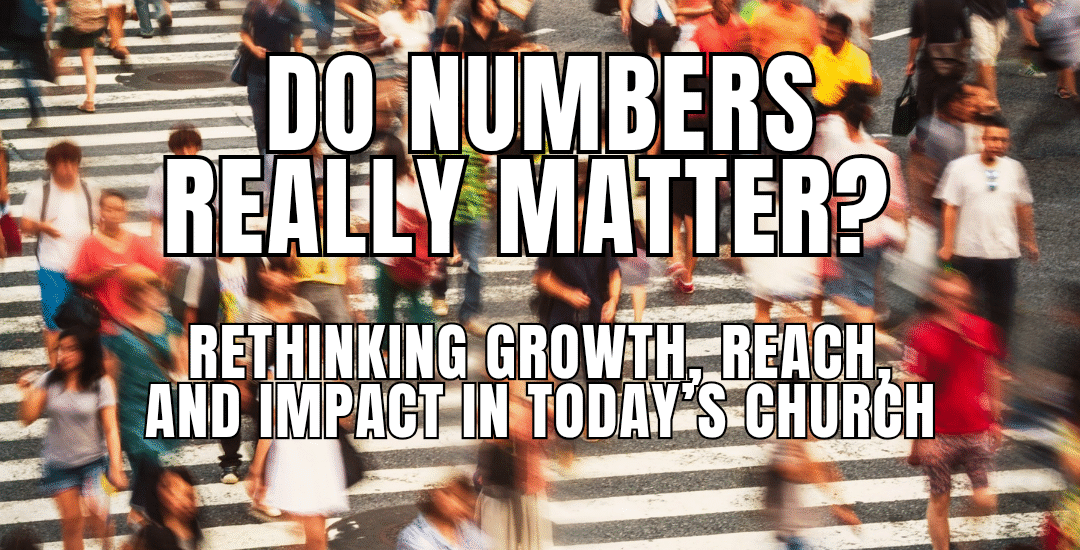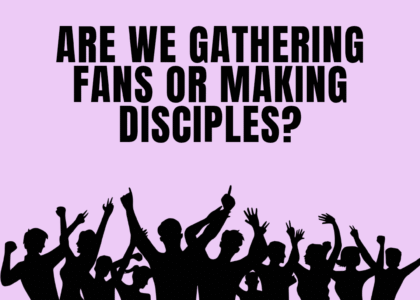Do Numbers Really Matter?
If you’ve been in church leadership long enough, you’ve probably heard the familiar question ringing through the corridors of ministry conversations: “So… how many people are attending now?”
It’s subtle, but in that moment, something shifts. Without saying it, we begin to measure faithfulness through headcount.
But let’s ask the uncomfortable question: Does a crowded sanctuary automatically mean a transformed city?
If heaven throws a party for one soul (Luke 15:7), why do we only celebrate when we hit one thousand?
We are living in an era where numbers are visible, but fruit is often invisible. Followers, views, attendance — easy to count. Transformation? Harder to measure. And yet, it is what matters most to God.
Leonard Ravenhill once said, “We’re not building churches, we’re raising monuments. God is looking for disciples, not audiences.”
Why Numbers Still Matter — But Not the Way We Think
- To be clear, numbers are not evil. The Bible recorded them:
- 3,000 were added to the church in one day (Acts 2:41).
- Jesus fed 5,000 men, not counting women and children (Matthew 14:21). The disciples reported numbers not to boast, but to testify of movement and multiplication.
Numbers point to reach — how far the message has travelled. Reach matters, because the Gospel is meant to go out into highways and byways.
But here’s the danger:
- We can have reach without impact.
- We can gather people without transforming them.
- We can fill seats and still have empty hearts.
A.W. Tozer warned, “If the Holy Spirit was withdrawn from the church today, 95% of what we do would go on and no one would know the difference.”
This is the crisis — activity without transformation.
The Rise of the ‘Cosy Church’ — Is Smaller Always Deeper?
In response to mega-gatherings, some churches embrace a bespoke, cosy, intimate atmosphere — smaller circles, personal touch, community vibes.
That sounds beautiful — and it can be. Jesus had Peter, James, and John. He walked with twelve, even while He reached the multitudes.
But intimacy without mission becomes isolation.
- A church can be small because it’s intentional — or because it’s comfortable.
- A church can be cosy because it’s caring — or because it’s settled.
Small does not automatically mean deep. Big does not automatically mean shallow.
Size is not the issue — direction is.
C.H. Spurgeon said, “The greatest tragedy is not unanswered prayer, but unoffered prayer.”
Likewise, the greatest tragedy in church is not empty seats, but uncommissioned believers.
Reach vs. Impact — Understanding the Difference
Reach is about how far the Gospel travels — how many people heard, attended, watched, or showed up. It measures crowd gathering and visibility.
Impact, however, is about how deeply the Gospel transforms. It is not about how many people were in the room but how many were activated beyond the room. Impact asks: Did they leave different? Are they carrying Jesus into their world?
Here’s the contrast simply: Reach counts how many came in. Impact asks how many were sent out.
John Wesley said, “Give me one hundred men who love nothing but God and hate nothing but sin, and I will shake the gates of hell.”
He didn’t ask for crowds. He asked for disciples on fire.
Jesus ministered to crowds, discipled twelve, mentored three, and called one by name. This is not just a pattern — it’s a strategy.
Healthy churches don’t choose between reach and impact — they carry both.
More Important Than Counting People… Is Sending People
If numbers truly mattered to Jesus, then the story should say, “And great crowds followed Him… and so He built a bigger stage.”
But instead, it says: “He appointed twelve that they might be with Him and that He might send them out…” — Mark 3:14
Notice the order:
- Be with Him — intimacy
- Be sent by Him — impact
A church should not just be a place where people come. It should be a place where people are formed and sent.
“The true measure of a church is not its seating capacity but its sending capacity.”
Measuring What Heaven Measures
Maybe the question is not “How many showed up?”
Maybe the better question is:
- How many encountered Jesus beyond a program?
- How many moved from consumer to disciple?
- How many stopped attending and started carrying?
- How many took the Gospel into boardrooms, campuses, families, street corners?
Crowds are impressed by Jesus. Disciples imitate Jesus.
So… What Is the Key?
The key is not big vs small. The key is movement.
A church of thousands that only gathers can become a spiritual event centre. A church of dozens that never multiplies can become a holy comfort zone. The Kingdom grows not by addition but by multiplication.
And multiplication happens not when people gather around a pulpit, but when they are scattered with a purpose.
Mother Teresa once said, “We are not called to be successful; we are called to be faithful.”
Faithfulness to Jesus always leads to movement, not maintenance.
A Final Thought
“God never called us to build big churches. He called us to build big people.”
Heaven is not impressed by our buildings or our follower count. Heaven looks for fruit, not figures. And fruit looks like disciples carrying Jesus into everyday life.
Reflection:
- Am I counted or commissioned?
- Am I simply attending or advancing?
- If everyone in my church lived like me — would our city know Jesus more?





